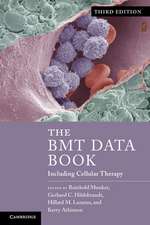Atherosclerosis — is it reversible?
Editat de G. Schettler, E. Stange, R. W. Wissleren Limba Engleză Paperback – 31 ian 1978
Preț: 707.13 lei
Preț vechi: 744.35 lei
-5% Nou
Puncte Express: 1061
Preț estimativ în valută:
135.31€ • 141.65$ • 111.96£
135.31€ • 141.65$ • 111.96£
Carte tipărită la comandă
Livrare economică 05-19 aprilie
Preluare comenzi: 021 569.72.76
Specificații
ISBN-13: 9783540085829
ISBN-10: 3540085823
Pagini: 120
Ilustrații: X, 104 p. 26 illus.
Dimensiuni: 170 x 244 x 6 mm
Greutate: 0.2 kg
Editura: Springer Berlin, Heidelberg
Colecția Springer
Locul publicării:Berlin, Heidelberg, Germany
ISBN-10: 3540085823
Pagini: 120
Ilustrații: X, 104 p. 26 illus.
Dimensiuni: 170 x 244 x 6 mm
Greutate: 0.2 kg
Editura: Springer Berlin, Heidelberg
Colecția Springer
Locul publicării:Berlin, Heidelberg, Germany
Public țintă
ResearchDescriere
Even though numerous questions with regard to the pathogenesis of athero sclerosis have not yet been answered, the accumulated evidence indicates significant regression of lesions in experimental animals. This is discussed extensively in this monograph, as are the mechanisms involved in regression of lesions. Whether human atherosclerosis has the potential for regression appears to be the most important, but at the same time the most difficult question to answer. Contrary to experimental atherosclerosis in animals, which can be produced and which can regress within a few months, human lesions in general develop slowly over many years. Therefore, measures aimed at modifying this process may also require many years to be successful. In addition, repeated direct examination of lesions in the human is usually not possible. Nevertheless, recent reports in patients with hyperlipoproteinemias indicate that pronounced and maintained control of hyperlipidemias may lead, even within months, to regression as evidenced by angiography or sophisticated measurements of peripheral circulation. The monograph is divided into two sections. The first will deal with of lipid deposition in the arterial wall, whether "atherogenesis": mechanisms or not there is evidence of monoclonal origin of human atherosclerosis plaques, cell culture and factors that stimulate smooth muscle proliferation, and animal models of atherogenesis. This section is concluded with a discussion of dietary factors other than lipids in atherogenesis.
Cuprins
Atherogenesis.- Mechanisms of Lipid Deposition in the Artery Wall.- Monoclonal Character of Human Atherosclerotic Plaques.- Cell Culture and Factors That Stimulate Smooth Muscle Proliferation.- Smooth Muscle Cell Proliferation and Migration After Removal of Arterial Endothelium in Rabbits.- Electron Microscopic Studies on Atherogenesis.- The Porcine Species, an Useful Model in Comparative and Experimental Arteriosclerosis Research.- Atherogenesis — Dietary Factors Other Than Lipid.- Regression.- Components of Lesion and Regression.- Fibrous Plaques and Regression.- Regression of Early Lesions in Monkeys.- Baboons and Regression.- Other Primates and Regression.- Catabolism of VLDL and Removal of Cholesterol From Intact Cells.- Removal of Endogenously Labeled Lipid From Atherosclerotic Aortic Explants Incubated in Vitro.- Regression of Atherosclerosis in Man.- Risk Factors and Regression.





